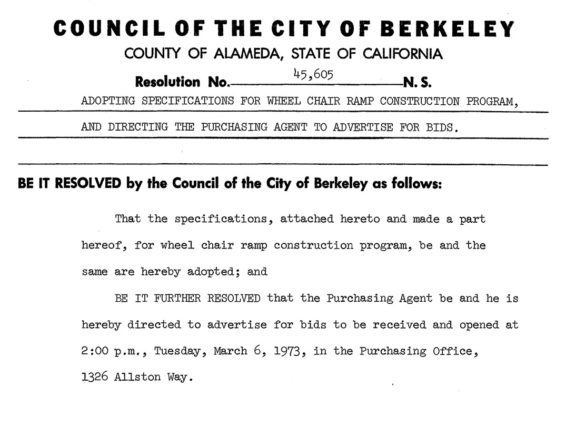
[Council of the City of Berkeley. Resolution No. 45,605. 1973.]
With the passage of the Architectural Barriers Act in 1968, the federal government declared that all newly constructed federal buildings needed to be accessible to individuals with disabilities. However, this law was not enforced and did not apply to past construction. Consequently, individuals with disabilities were forced to continue relying on personal attendants for transportation—to lift them over curbs and up and down stairs.
["Free Wheeling" Segment from People in Motion, Ready to Live. Interview with Ed Roberts.]
According to today's standards, sidewalks must not exceed slopes of 5%. As seen on the map to the right, nearly all the routes are on high slopes that are inaccessible to individuals in wheelchairs.
"
If you're trying to get across the street and there are no curb cuts, six inches might as well be Mount Everest."
-Lawrence Carter-Long, Director of Communications, Disability RIghts Education and Defense Fund
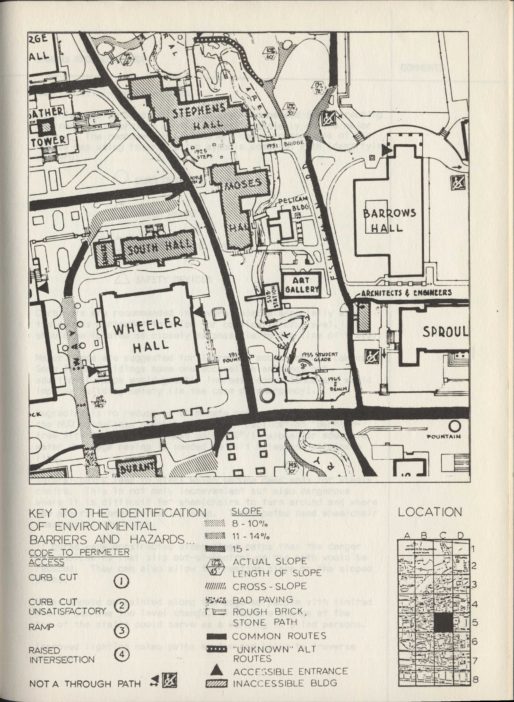
[Office of Programming and Architectural Services, Identification of Architectural Barriers and Other Environmental Hazards to Physically Disabled People, University of California, Berkeley. 1976.]
To enhance the mobility of individuals with disabilities, Ruth Grimes, Eric Dibner, and Hale Zukas—leading activists of the Center for Independent Living (CIL)—collaborated in the summer of 1972 to examine street intersections and to recommend locations for implementing new curb ramps.
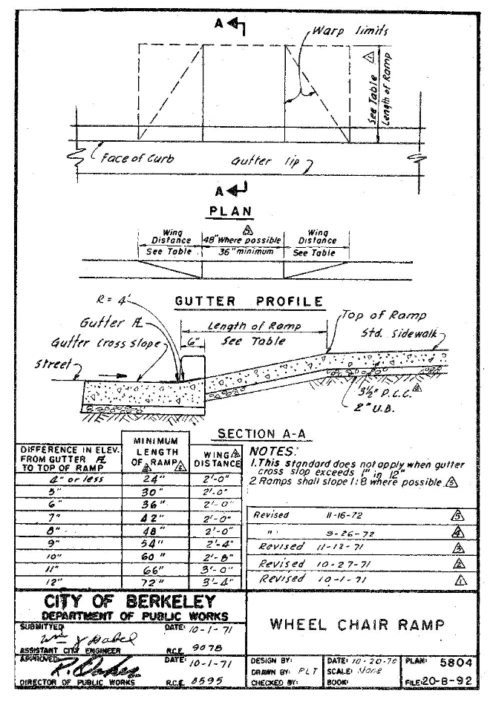
[Council of the City of Berkeley. Hale's Design for a Curb Ramp.]
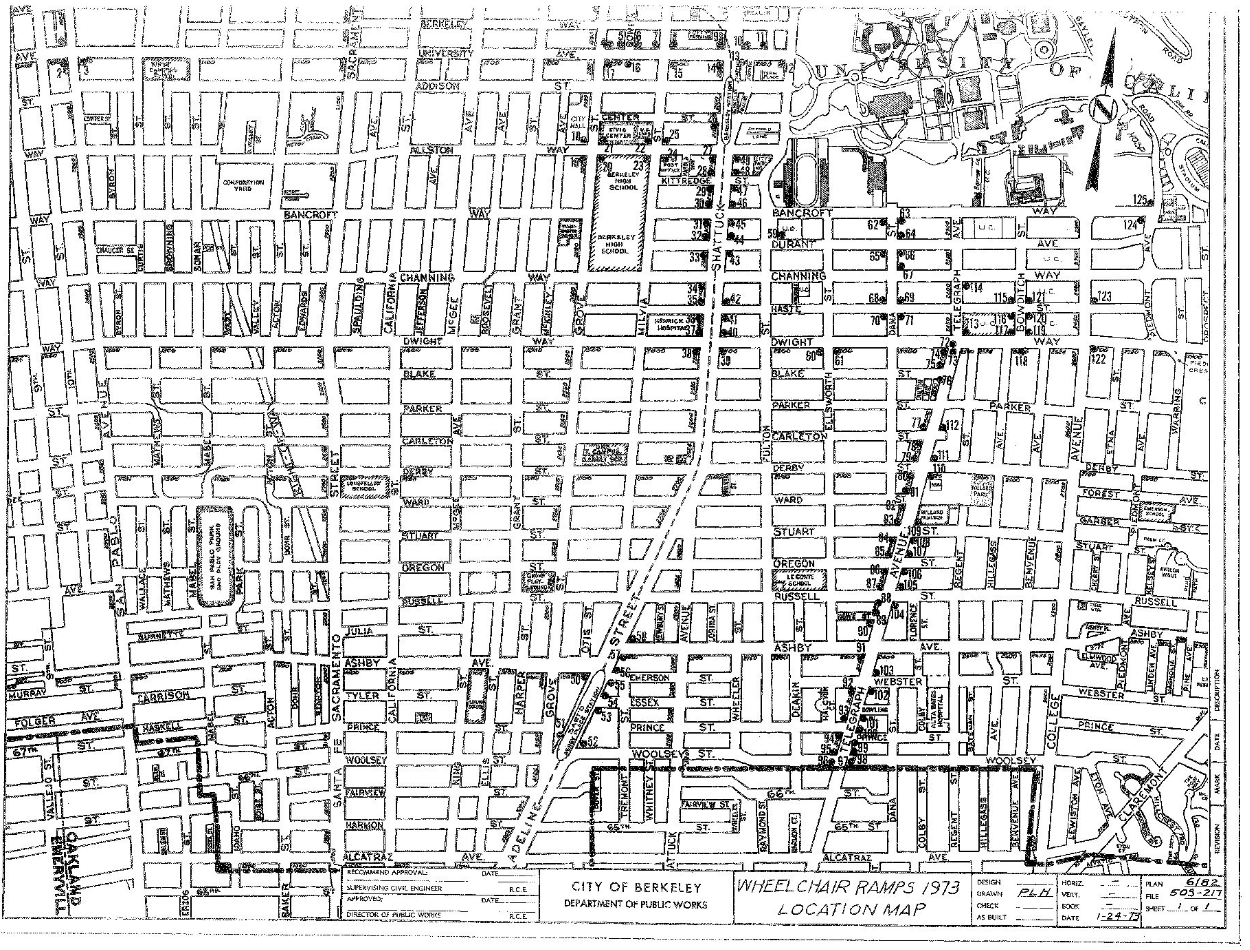
Dots in this map indicate 125 new curb ramps to be installed by the city of Berkeley.
[Council of the City of Berkeley.
Wheelchair Ramps 1973 Location Map.]
As a result of the CIL's fervent advocacy, the City of Berkeley passed a resolution a year later to build the longest wheelchair-accessible route in America. The Department of Public Works implemented Zukas's curb ramp design at the recommended locations, transforming daily life for blind pedestrians and wheelchair users, who could now travel safely and independently.

[Council of the City of Berkeley. Resolution No. 45,605. 1973.]
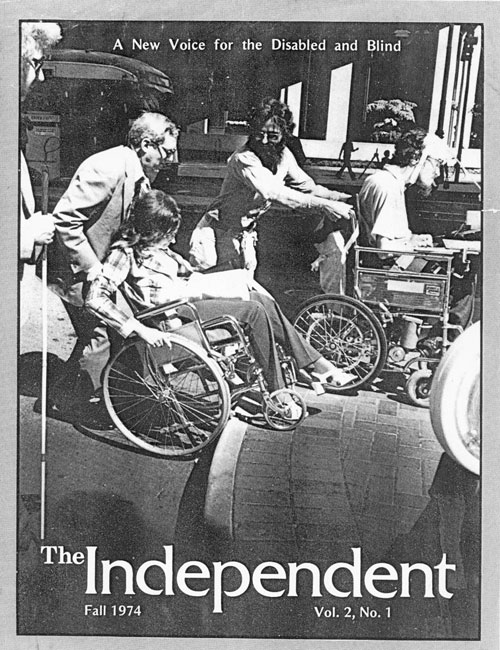
[Cover of The Independent, Fall 1974.
Berkeley disability activists roll up one of the city’s first official curb ramps.]
The City of Berkeley established the standard for accessible living, inspiring cities and designers worldwide to design environments where individuals with disabilities would be seen and treated with human dignity.